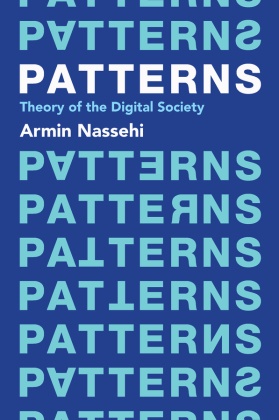Patterns - Theory of the Digital Society
| Verlag | Wiley & Sons |
| Auflage | 2024 |
| Seiten | 268 |
| Format | 15,2 x 2,3 x 23,0 cm |
| Gewicht | 412 g |
| Artikeltyp | Englisches Buch |
| EAN | 9781509558223 |
| Bestell-Nr | 50955822UA |
We are inclined to assume that digital technologies have suddenly revolutionized everything - including our relationships, our forms of work and leisure, and even our democracies - in just a few years. Armin Nassehi puts forward a new theory of digital society that turns this assumption on its head. Rather than treating digital technologies as an independent causal force that is transforming social life, he asks: what problem does digitalization solve?
When we pose the question in this way, we can see, argues Nassehi, that digitalization helps societies to deal with and reduce complexity by using coded numbers to process information. We can also see that modern societies had a digital structure long before computer technologies were developed - already in the nineteenth century, for example, statistical pattern recognition technologies were being used in functionally differentiated societies in order to recognize, monitor and control forms of human behaviour. Digital technologi es were so successful in such a short period of time and were able to penetrate so many areas of society so quickly precisely because of a pre-existing sensitivity that prepared modern societies for digital development.
This highly original book lays the foundations for a theory of the digital society that will be of value to everyone interested in the growing presence of digital technologies in our lives.
Inhaltsverzeichnis:
Preface to the English Edition
Preface
Introduction
How to think about digitalisation?
A technological-sociological kind of intuition
Early technology pushes
Original and copy
Productive wrong and predetermined breaking point
1 The Reference Problem of Digitalisation
Functionalist questions
Connecting data - offline
What is the problem?
The uneasiness with the digital culture
The digital discovery of `society´
Empirical social research as the identification of patterns
`Society´ as digitalisation material
The cyborg as a means of overcoming society?
2 The Idiosyncracy of the Digital
The inexact exactness of the world
The particular idiosyncracy of data
Cybernetics and the feedback of information
The digitalisation of communication
The dynamic of closure
The self-referentiality of the world of data
3 Multiple Duplications of the World
Data as observers
Duplications
Disturbances
Transverse data-like duplications
The trace of the trace and discrete duplications
Traces, Patterns, Networks
4 Simplicity and Multiplicity
Medium and form
Coding and programming
The digital simplicity of society
Increased options
Sapere aude as it is reflected in digitalisation
Excursus: Digital Metabolism
5 Functioning Technology
The function of the technological
Digital technology
Communicating technology
The function of functioning
Low-level technology
Demonised technology
Invisible technology and the Turing test
The privilege of making mistakes
6 Learning Technology
Decisions
Abductive machines?
Distributed intelligence?
Anthropological and technological questions
Experi encing and acting machines
Incompleteness, temporariness, systemic paradoxes
Artificial, bodily, incomplete intelligence
7 The Internet as a Mass Media
Surplus of meaning deals
Synchronisation function
Synchronisation and socialisation
Selectivity, mediality and voice in the Internet
Watching the watching
Complexity and overheating
The Internet as an archive of all kinds of statements
Intelligence in the mode of Future perfect
8 Endangered Privacy
The improbability of informational self-determination
A new structural change of the public?
Hazards
Privacy 10
Privacy 10 as a result of Big Data?
Big Data and privacy 20
Rescuing privacy?
9 Debug: Sociology Reborn from the Spirit of Digitalisation
Digital dynamic and social complexity
An opportunity for sociology
Notes
Index

